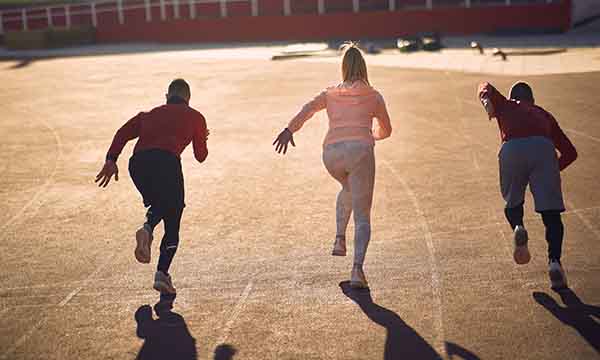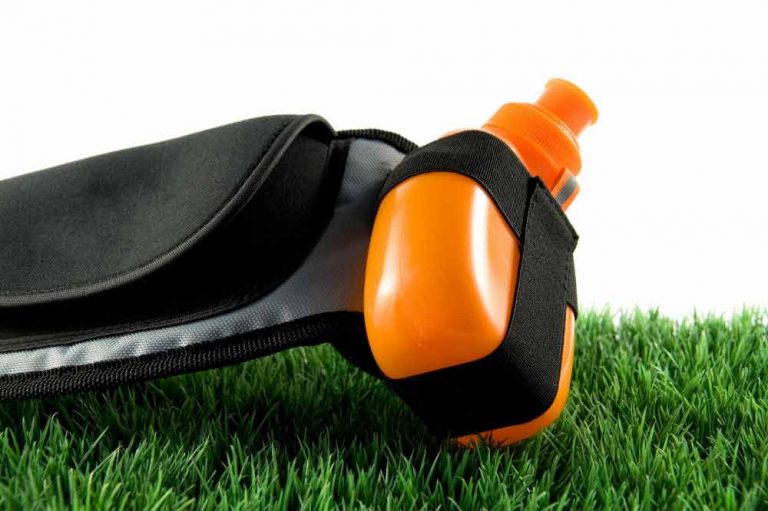Mile Run Time? How Long Does It Take + Tips to Improve Your Mile Time
Running a mile is not as easy as it seems. Many factors affect how long it takes to run a mile. Why is running a mile such a challenging task? And what factors affect your mile run time?
It’s difficult, but not impossible, to pinpoint exactly how long it takes an average individual to run a mile.
- A healthy adult runner in the United States usually completes a mile in 9 to 10 minutes on average, according to ProudToRun.
- It takes 12-15 minutes for a new runner.
- The time it takes varies based on your fitness level, age, and gender.
In this article, we’ll look at the average time it takes a person to run a mile, as well as precise running estimates for different ages and genders.
We will also discuss the practical methods for measuring how long it takes you to run a mile.
How Long Does It Take to Run a Mile?
Younger runners typically have faster mile times than older runners due to differences in muscle mass, cardiovascular fitness, and overall health.
As we age, our bodies tend to lose muscle mass, and our cardiovascular fitness may decline, making it more challenging to maintain faster mile times.
However, regular exercise and physical activity can help mitigate some of these effects of aging and maintain faster mile times.
Average Mile Run Times
For different ages and levels of experience, here are approximate mile times:
- Age 20-29:
- Beginner: 8:00-10:00 minutes/mile
- Intermediate: 6:00-7:30 minutes/mile
- Advanced: 5:00-6:30 minutes/mile
- Age 30-39:
- Beginner: 9:00-11:00 minutes/mile
- Intermediate: 7:00-9:00 minutes/mile
- Advanced: 6:00-7:30 minutes/mile
- Age 40-49:
- Beginner: 10:00-12:00 minutes/mile
- Intermediate: 8:00-10:00 minutes/mile
- Advanced: 7:00-9:00 minutes/mile
- Age 50-59:
- Beginner: 12:30-15:00 minutes/mile
- Intermediate: 10:00-12:30 minutes/mile
- Advanced: 8:30-10:30 minutes/mile
- Age 60+:
- Beginner: 15:00-18:00 minutes/mile
- Intermediate: 12:30-15:00 minutes/mile
- Advanced: 10:30-12:30 minutes/mile
Note that these are rough averages and individual abilities can vary.
The Main Factors That Influence Your Mile Run Time
Below are some factors discussed in detail that influences your running speed.
How Age Affects Mile Run Times
Age can have a significant impact on mile run times. Generally, younger individuals have faster mile run times than older individuals.
As people age, their maximum heart rate decreases, and their muscles and joints become less flexible, leading to a decline in overall fitness and athletic performance.
- From the 20s to the mid-30s, running performance tends to remain stable.
- Once we hit 40, our running speed and mile times naturally slow.
- The decline is gradual, typically around 1 percent annually, until age 65-70, after which the drop becomes more substantial.
The extent to which mile time decreases will depend on fitness level and training.
Nevertheless, research suggests that the age-related decline in running speed can be significant.

The Impact of Gender on Your Mile Time
Gender can impact how fast someone can run a mile. Generally, men tend to have faster mile run times than women due to differences in muscle mass and oxygen uptake.
- Men’s average mile run time is 6 minutes and 30 seconds.
- For women, it’s around 8 minutes and 30 seconds.
- Remember that these are just average times, and individual abilities can differ significantly.
For example, the world record for the mile run by a man is 3 minutes and 43 seconds, and for women, it’s 4 minutes and 12 seconds.
How Running Form Affects Your Mile Run Time
A proper running form decreases muscular fatigue and reduces tension throughout the body.
- Hold your head high and your back straight without bending too far forward to develop an appropriate form.
- Keep your wrists relaxed, elbows bent at a 90-degree angle, and hands naturally cupped to unwind the rest of your body.
As you run, swing your arms along your chest and waistline, pumping them harder to complete brief sprints, climb hills, or reach the finish line.
The Relationship Between Body Composition and Mile Time
A person’s body composition can also impact their mile run time. Individuals with a higher body fat percentage or who carry more weight may find it more challenging to run a mile quickly than those with a lower body fat percentage and are leaner.
Body composition is essential in the mile run time since it affects a person’s overall fitness level, endurance, and cardiovascular health. Reducing body fat through exercise, diet, and strength training can enhance running performance.
How To Measure a Mile Run?
You can wear a fitness band or a GPS watch from popular brands like Fitbit and Polar, which lets you track your speed.
You can also download a tracking app on your smartphone to measure the pace, distance, and time it requires for you to cover them.
Apps like Strava, Runkeeper, Mapmyrun, etc., are some of the handy tracking apps you can use.

Tips To Improve Your Mile Run Time
As you can see from the average times, it is a stretch to run a mile in under 7-minutes, for example. But it is doable with hard work.
Below are some tips to help you improve your speed.
1. Interval Training Can Improve Your Speed
Interval training at a high intensity is a great approach to enhance your pace and endurance.
Adding speed workouts into your training routine will help you increase your fitness and 1-mile pace.
2. Hill Training Can Help When Running a Mile
Training on hills will increase your speed while making you stronger. In addition, these exercises can help you improve your mile time by raising your lactate threshold.
3. Improve Your Running Form for a Better Mile Time
Spend a couple of minutes practicing the appropriate running form at the start of each run. Simple warm-up drills and exercises can be used to improve your posture; this will let you move more freely during the rest of your workout.
4. Stay Hydrated
Drink enough water throughout the day, not just during your runs, to stay hydrated.
5. Wear the Correct Footwear
Ask your local sports store for help selecting a pair of running shoes that fit your running style and goals.
6. Maintain a Healthy Lifestyle
Have a healthy food plan to help you achieve your goals, whether to run a faster mile, gain muscle, or lose weight.
The Bottom Line
A good mile time for a beginner depends on where you start. If you’re a regular runner, you should be pleased if you can complete a mile in under ten minutes.
You can improve your mile time by including intense exercise, hilly workouts, and high-intensity interval training in your exercise routine.
Running a mile begins your journey for longer distances. Next, you can increase your mileage and try how long it takes to run 3 miles.






